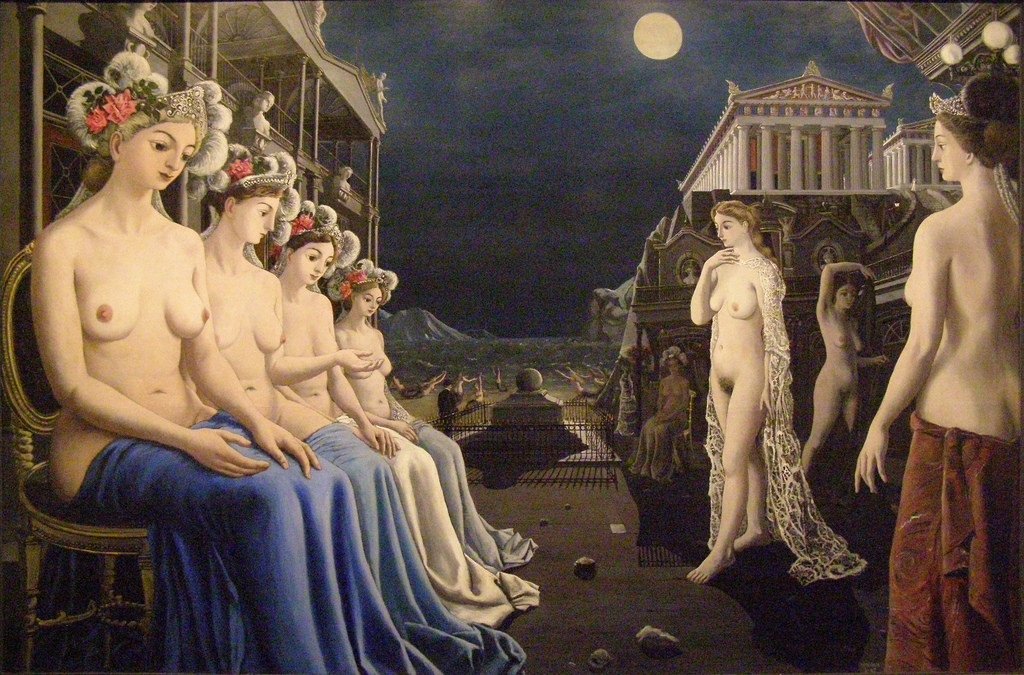Paul Delvaux (1897-1994) was a Belgian painter associated with the surrealist movement. He was born on September 23, 1897, in Antheit, Belgium, and is known for his dreamlike and mysterious paintings featuring isolated figures, classical architecture, and enigmatic landscapes.
Delvaux initially studied architecture but shifted his focus to painting in the early 1920s. He was influenced by the works of Italian Renaissance painters, as well as the metaphysical art of Giorgio de Chirico. Delvaux’s paintings often depict nude or partially clothed women in poetic and dreamlike scenarios.
One of Delvaux’s recurring motifs is the train station, which he used as a symbol of transition and the boundary between reality and fantasy. His compositions frequently juxtapose classical statues or skeletal figures with modern elements, creating a sense of tension and ambiguity.
Delvaux’s meticulous attention to detail, combined with his use of cool, muted colors, contributes to the eerie and otherworldly atmosphere present in many of his works. He employed a technique known as “clair obscur” to create dramatic lighting effects and emphasized the contrast between light and shadow.
Although Delvaux was associated with the surrealists, he had a more detached approach to the movement and did not engage in the same level of automatic writing or psychic automatism as his contemporaries. His works often evoke a sense of mystery and introspection rather than the outright shock or rebellion characteristic of other surrealist artists.
Throughout his career, Delvaux received critical acclaim for his distinctive style and contributed significantly to the surrealist movement. His paintings can be found in museums and art collections around the world, and he is considered one of Belgium’s most important 20th-century artists.
To open a pdf with the works in your browser, click here: 12 Works of Paul Delvaux




